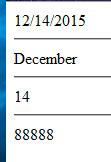Donald Denney
2/16/2011
How to use your smart phone as a smart solid state storage device.
These instructions are for experienced users who have file management skills and a thorough knowledge of connecting devices to a computer. This is an advanced method of file storage and transportation.
Introduction
Most students have the need to transport files. Storing them on a flash drive is one of the most common methods of file storage and transportation. However, there are many problems associated with using a flash drive. Flash drives are not secure, and are very easy to lose. Carrying multiple devices around is inefficient. “Smart Phones” come with ample storage, can hold your files and interact with computers easily.
Tools For this project, you will need: A “Smart Phone”, USB cord, Personal Computer. All of these should not be more than a few years old, or they won’t have the proper firmware, software and file transfer protocol installed. Steps
- The first step is to figure out if your phone will work for this purpose. If your phone came with a USB cord for connecting to computers, then it should work. Also, if the phone uses external memory card storage, then it has a good chance of working for this purpose.
- The second step is to connect the USB cable to your phone. Carefully insert the correct end into the proper slot on the phone. Use extreme caution not to insert the cable improperly, and don’t use too much force or you can permanently damage your device.
- The third step is to connect the other end of USB cable to your computer. If you have a choice, use the High Speed USB port usually located toward the front of most computers. If you don’t have a choice then just use whatever port is available.
- The fourth step is to wait while Windows recognizes your device. Sometimes this can take quite a while. If you are prompted, answer the prompts using your desired settings. You shouldn’t need to install any software from CD or the Internet. Windows comes standard with the default drivers you will need.
- The sixth step is to navigate to the folder where you will store your files. From “My Computer”, a new drive letter will appear in the same manner as when a flash drive is inserted. Navigate into the drive, and choose a location for your files.
- The final step is to transfer your files. Copy and paste, or save the file from your favorite application directly onto your phone flash drive.
Conclusion The phone can be a wonderful file storage medium, and it is a lot more convenient than using a separate flash drive. The benefits of having your files with you wherever you go are plentiful, including knowing they are secure, having the latest version of a file, and always knowing who has access to your files. As new phones are released, they are packed with features that make it easy to use as file storage for music, videos and documents.


